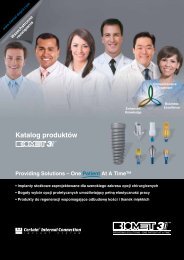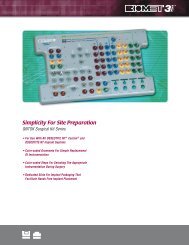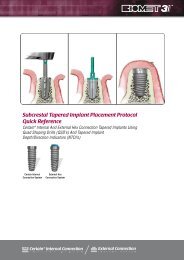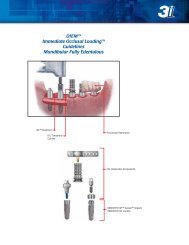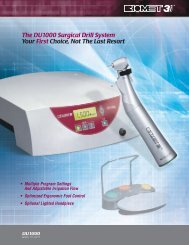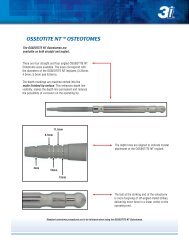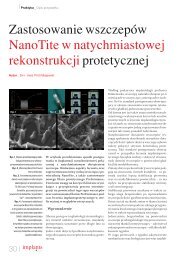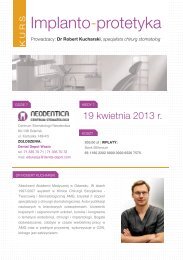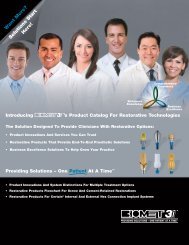Why A NanoTite Tapered Implant? - Dental-Depot
Why A NanoTite Tapered Implant? - Dental-Depot
Why A NanoTite Tapered Implant? - Dental-Depot
Create successful ePaper yourself
Turn your PDF publications into a flip-book with our unique Google optimized e-Paper software.
A Bone Bonding ® * Surface That’s Out Of This World<br />
The <strong>NanoTite</strong> <strong>Implant</strong> builds on the success of the OSSEOTITE ® Surface by creating a more complex surface topography<br />
and maximizing the potential biological benefits of Calcium Phosphate (CaP).<br />
For more than 10 years and with documentation from numerous global multicenter clinical evaluations, the OSSEOTITE<br />
Surface has proven to be one of the most predictable and well-researched surfaces 1-8 . Clinical studies on the<br />
OSSEOTITE Surface continue to document the benefits of increased Contact Osteogenesis, especially in poor-quality bone.<br />
OSSEOTITE Surface at 20,000x magnification<br />
<strong>NanoTite</strong> Surface at 20,000x magnification<br />
Through a solution-based form of particle self-assembly called the Discrete Crystalline Deposition (DCD ) Process,<br />
individual deposits of discrete crystals of CaP are deposited onto the implant surface and occupy approximately 50%<br />
of the OSSEOTITE Substrate Surface 9 . In so doing, the DCD Process also increases the micro-surface area by 200% 10 ,<br />
providing greater micro-complexity for new bone attachment and formation.<br />
The DCD Process<br />
1. Nanometer-scale, ultra small particles of highly crystalline<br />
Calcium Phosphate (CaP) are suspended in the solution<br />
2. These particles are then prompted to “Self-Assemble”<br />
onto the implant titanium oxide surface<br />
3. This results in discrete crystal deposits of 20-100 Nanometers<br />
in length on the dual acid etched OSSEOTITE <strong>Implant</strong> Surface.<br />
The shear strength of crystal attachment to the OSSEOTITE<br />
Surface exceeds the minimum shear strength value of 34.5<br />
MPa, set by the ASTM standard (F 1609-03) for attachment<br />
of traditional HA coatings to implant surfaces<br />
1<br />
2<br />
3<br />
*The interlocking of the newly formed cement line matrix of bone with the implant surface.



